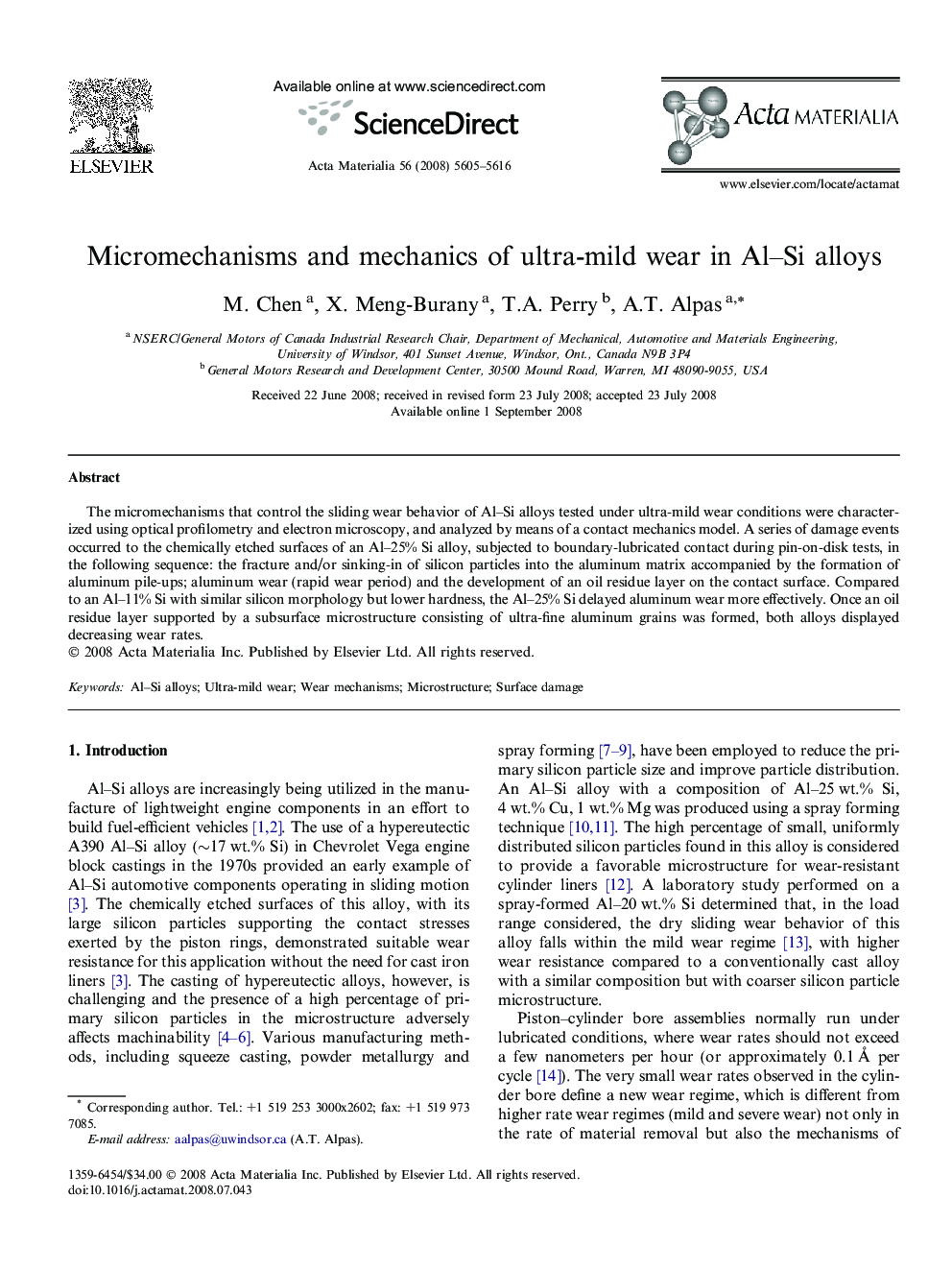| Article ID | Journal | Published Year | Pages | File Type |
|---|---|---|---|---|
| 1449817 | Acta Materialia | 2008 | 12 Pages |
The micromechanisms that control the sliding wear behavior of Al–Si alloys tested under ultra-mild wear conditions were characterized using optical profilometry and electron microscopy, and analyzed by means of a contact mechanics model. A series of damage events occurred to the chemically etched surfaces of an Al–25% Si alloy, subjected to boundary-lubricated contact during pin-on-disk tests, in the following sequence: the fracture and/or sinking-in of silicon particles into the aluminum matrix accompanied by the formation of aluminum pile-ups; aluminum wear (rapid wear period) and the development of an oil residue layer on the contact surface. Compared to an Al–11% Si with similar silicon morphology but lower hardness, the Al–25% Si delayed aluminum wear more effectively. Once an oil residue layer supported by a subsurface microstructure consisting of ultra-fine aluminum grains was formed, both alloys displayed decreasing wear rates.
